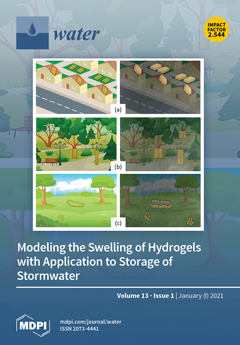Excessive nutrient input to surface water, including nitrate, exacerbates water eutrophication. Clarifying the proportions of different nitrate sources in the aquatic environment is critical for improving the polluted water. However, nitrate sources in river basins are very complex and not clearly understood. In
[...] Read more.
Excessive nutrient input to surface water, including nitrate, exacerbates water eutrophication. Clarifying the proportions of different nitrate sources in the aquatic environment is critical for improving the polluted water. However, nitrate sources in river basins are very complex and not clearly understood. In this study, nitrogen concentrations and nitrate isotopic compositions were determined to estimate the spatiotemporal variation in nitrate sources in the Yuntaishan River basin, Nanjing, East China, from March 2019 to January 2020. The results showed that the concentrations of total nitrogen (TN), ammonium (NH
4+-N), and nitrate (NO
3−-N) changed in the ranges of 0.53–18.0 mg/L, 0.01–15.4 mg/L, and 0.06–9.3 mg/L, respectively, wherein NO
3−-N was the main nitrogen form. Higher nitrogen concentrations appeared in winter and in the downstream parts of the river. In the entire river basin, the NO
3−-N mainly originated from sewage (67%) and soil (26%), with clear spatial variations. NO
3−-N in the Yunba sub-watershed was mainly derived from sewage (78%), which was higher than that in other tributaries, i.e., Shengli River (44%) and Yangshan River (49%). This was due to the fact that that Shengli and Yangshan sub-watersheds were covered by urban areas and were equipped with a complete sewage treatment system. In addition, the contributions of sewage to NO
3−-N rose from 60% upstream to 86% downstream, suggesting the increasing influence of the point source of sewage. The results showed that 53% of NO
3−-N in the basin outlet originated from the point source of sewage near the M4 site. Sewage contributed 75% of NO
3−-N in the rainy season and 67% of NO
3−-N in the dry season, suggesting the weakly temporal variation. Our results highlight the spatiotemporal variations in sources of NO
3−-N. These results will aid in the development of measures needed to control nitrogen pollution in river basins.
Full article





